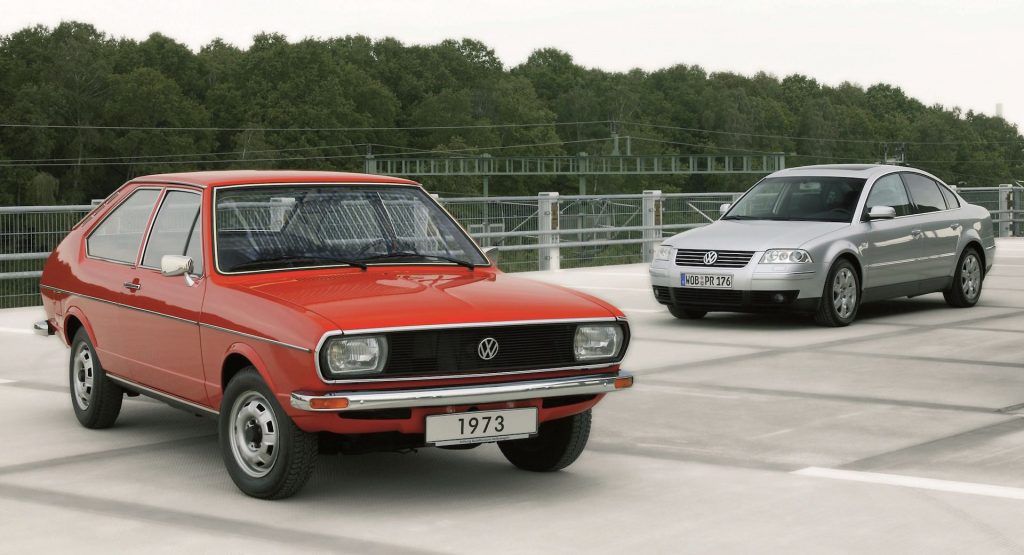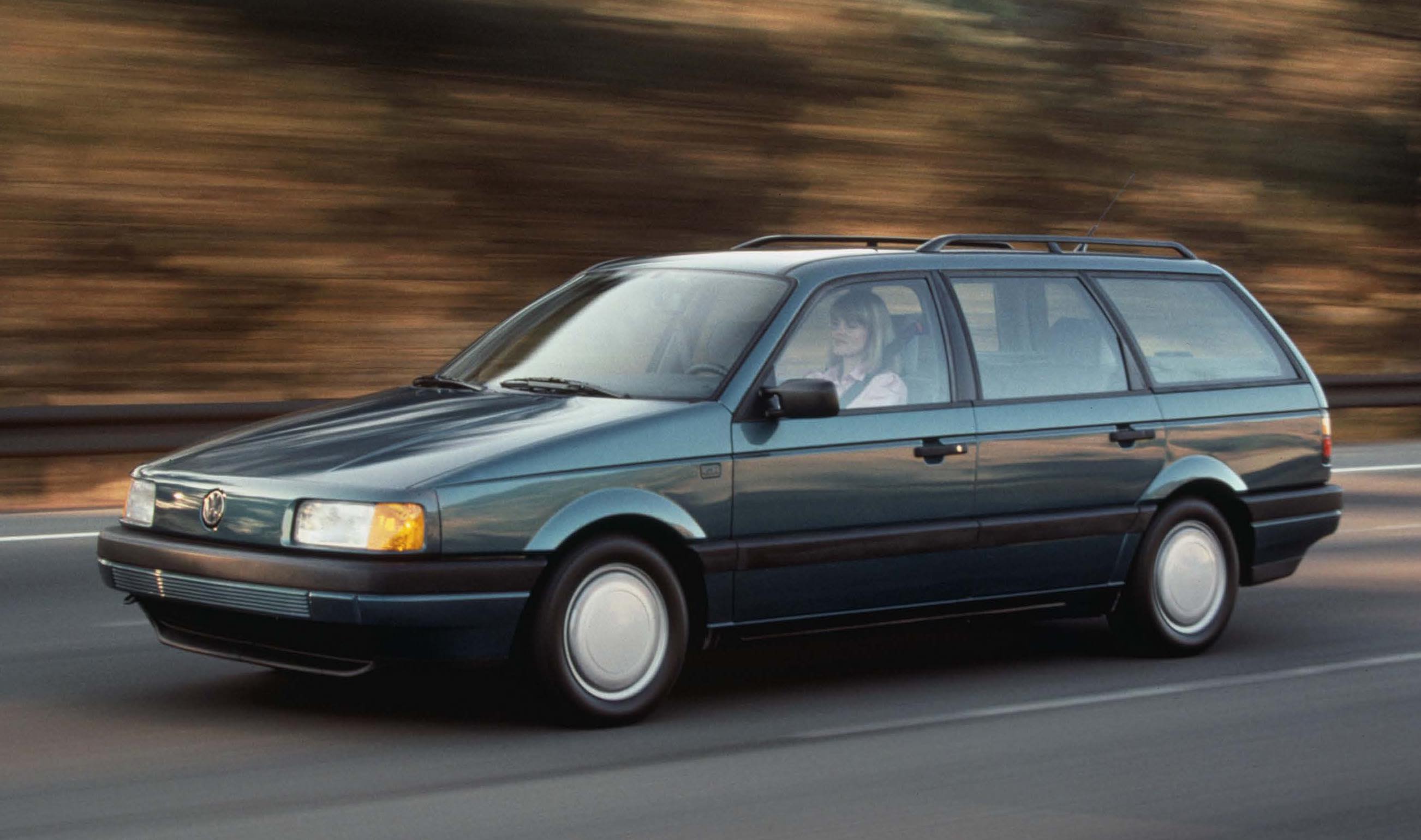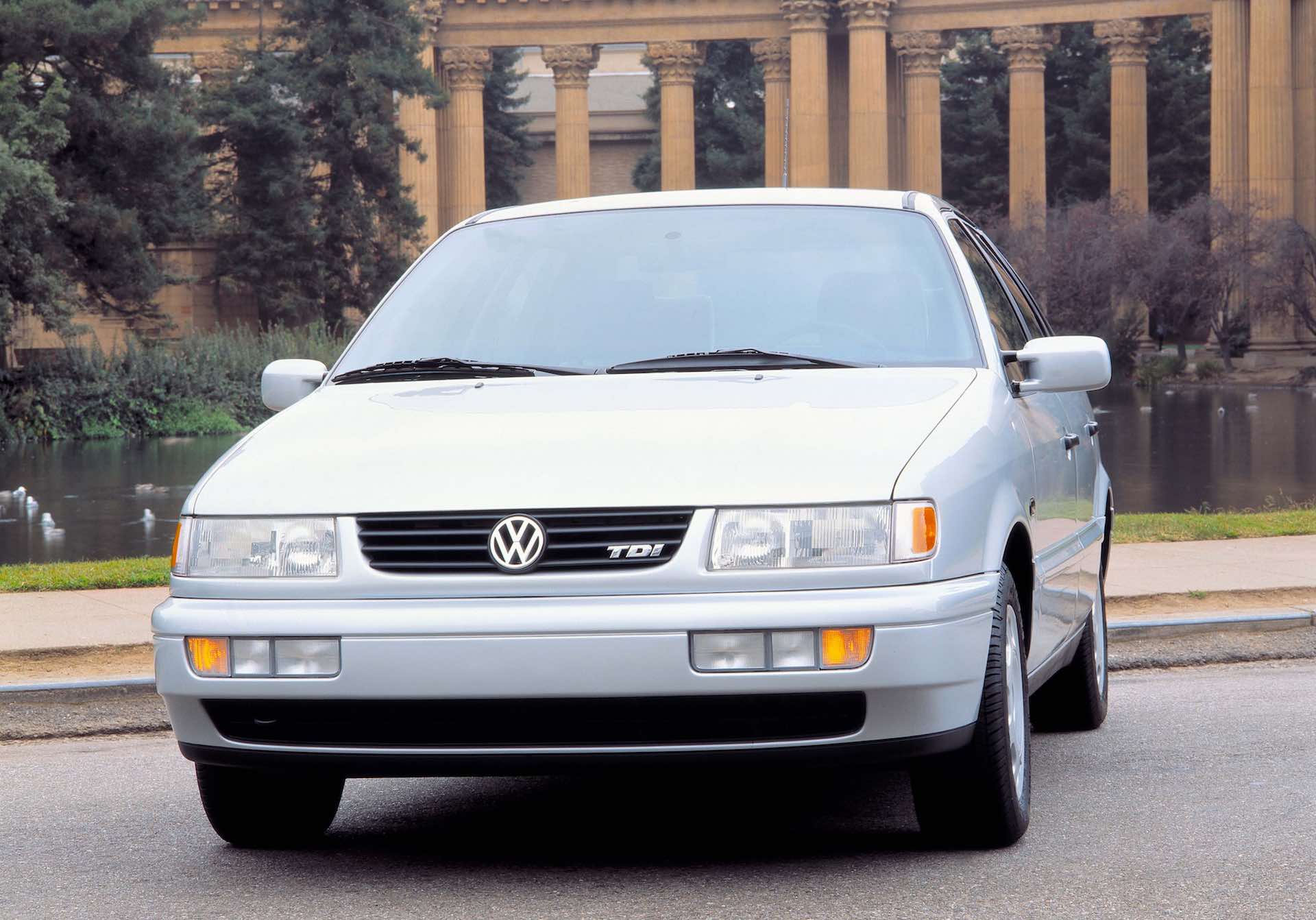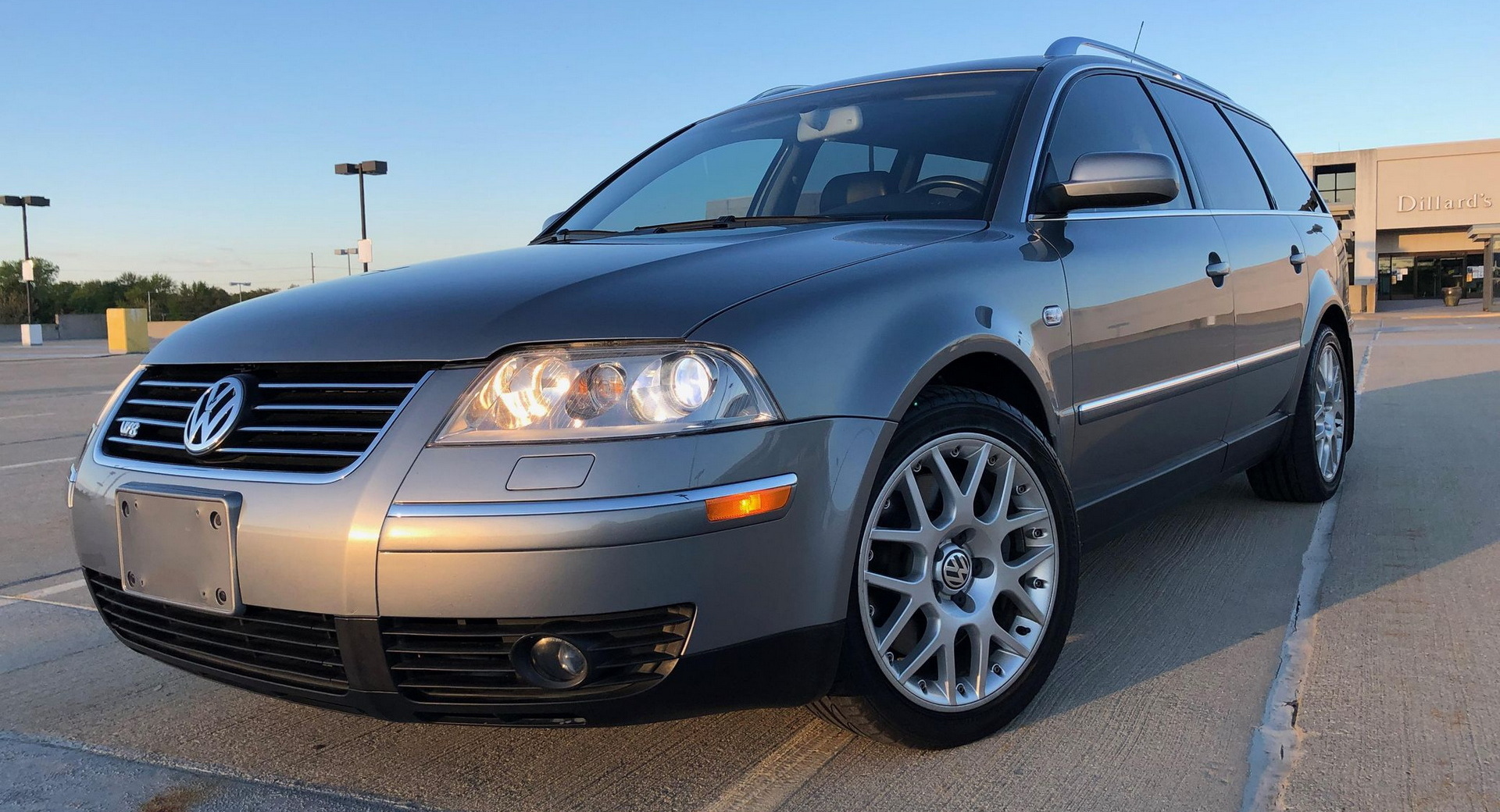After almost half a century of sterling service, VW has finally killed off the Passat, at least in the U.S. First introduced in 1973 in Germany, and arriving in North America for 1974, the mid-sized sedan is the latest victim of the crossover craze and will be discontinued after the 2022 model year.
VW’s Chattanooga Plant is building a run of 1973 Passat Limited Edition models before moving onto its next chapter, which involves making electric SUVs. So before we forget it even existed at all, here are the highs and lows of the Passat in North America.
1974-1981 Volkswagen Dasher (Passat B1)
Volkswagen America’s first water-cooled front-wheel drive car, the Passat arrived in the U.S. in 1974. Only it wasn’t called Passat, after a tradewind, like Europeans models, but Dasher, after Santa’s furry flier.
Related: U.S. Passat To Die After 2022MY, VW Sends It Off With Limited Edition
In addition to the four-door sedan and wagon, there was even a three-door fastback that looked like the result of a one-night stand between a Mk1 Golf/Rabbit and an Iso Lele GT. The sole engine was a 1.5-liter inline four with 75 hp, which was upgraded in 1976 to a fuel-injected 1.6 with a thunderous 78 hp. God, the 1970s must have been really miserable.
Highs: Crisp Giugiaro styling
Lows: Soggy 75 hp performance
1982-1989 Volkswagen Quantum (Passat B2)
The B2-generation Passat arrived in the U.S. in 1982, again based on the contemporary Audi 80, and with another name that still wasn’t ‘Passat’, but at least it wasn’t Dasher, either. Synchro all-wheel drive became an option later, as did a growly 2.2-liter inline-five that sounded like a Quattro, but with just 100 hp, definitely didn’t go like one.
Highs: Almost an Audi
Lows: For almost Audi money
1990-1997 Volkswagen Passat (B3 And B4)
It was all change for Passat #3, which became Passat #1 in the U.S. when model names were standardized at its introduction. VW switched its mid-size contender from the Audi 80’s longitudinal platform to a transverse layout and gave it a pretty radical grille-less snout that looked modern and referenced VW’s air-cooled past at the same time.
Ironically, it was junked and replaced by a regular nose for 1995’s facelifted B4 for being ‘too bland’. Top of the performance tree in both models was the 2.8-liter VR6 with 172 hp.
Highs: 2.8-liter VR6 was a real sleeper
Lows: Sleep-inducing styling after facelift
1998-2005 Volkswagen Passat (B5)
The Passat flipped back to an Audi platform, in this case the newly introduced A4’s, but all most people cared about the fancy new interior. Turbocharged gasoline and diesel fours ensured even the base cars were reasonably punchy, but on paper the coolest B5 was the 4.0-liter 270 hp Passat W8. Only on paper, and not in reality, because the W8 was disappointingly slow, not much fun to drive, and has a reputation for grenading itself.
Highs: Crazy 4.0-liter W8 even came as a manual
Lows: But you’ll be needing a different kind of manual for it
2006-2010 Volkswagen Passat (B6)
That shiny grille fronted a new transverse-engined car powered by either a 200 hp 2.0-liter four or a 280 hp 3.6-liter VR6. Trouble was, the upscale ones cost almost $40,000, meaning they were making BMW 330i-grade promises the driving experience couldn’t keep.
Highs: Showy chrome grille
Lows: Shown up by the BMW you could buy for similar money
2011-2022 Volkswagen Passat (New Midsize Sedan)
In a reversal of 1974’s shenanigans, VW’s American division kept the Passat name but created an entirely new car to go with it, and this time it was built in the U.S., at VW’s Chatanooga plant in Tennessee.
Compared with the Euro Passat, interior space was huge, and sales started out strong. But the rise of crossovers and the damaging effects of the dieselgate emissions crisis eroded its appeal over time.
Highs: Extra cabin space a breath of fresh air
Lows: True diesel emissions definitely weren’t
Will you miss the Passat, or did you think it died years ago? Leave a comment and let us know.











